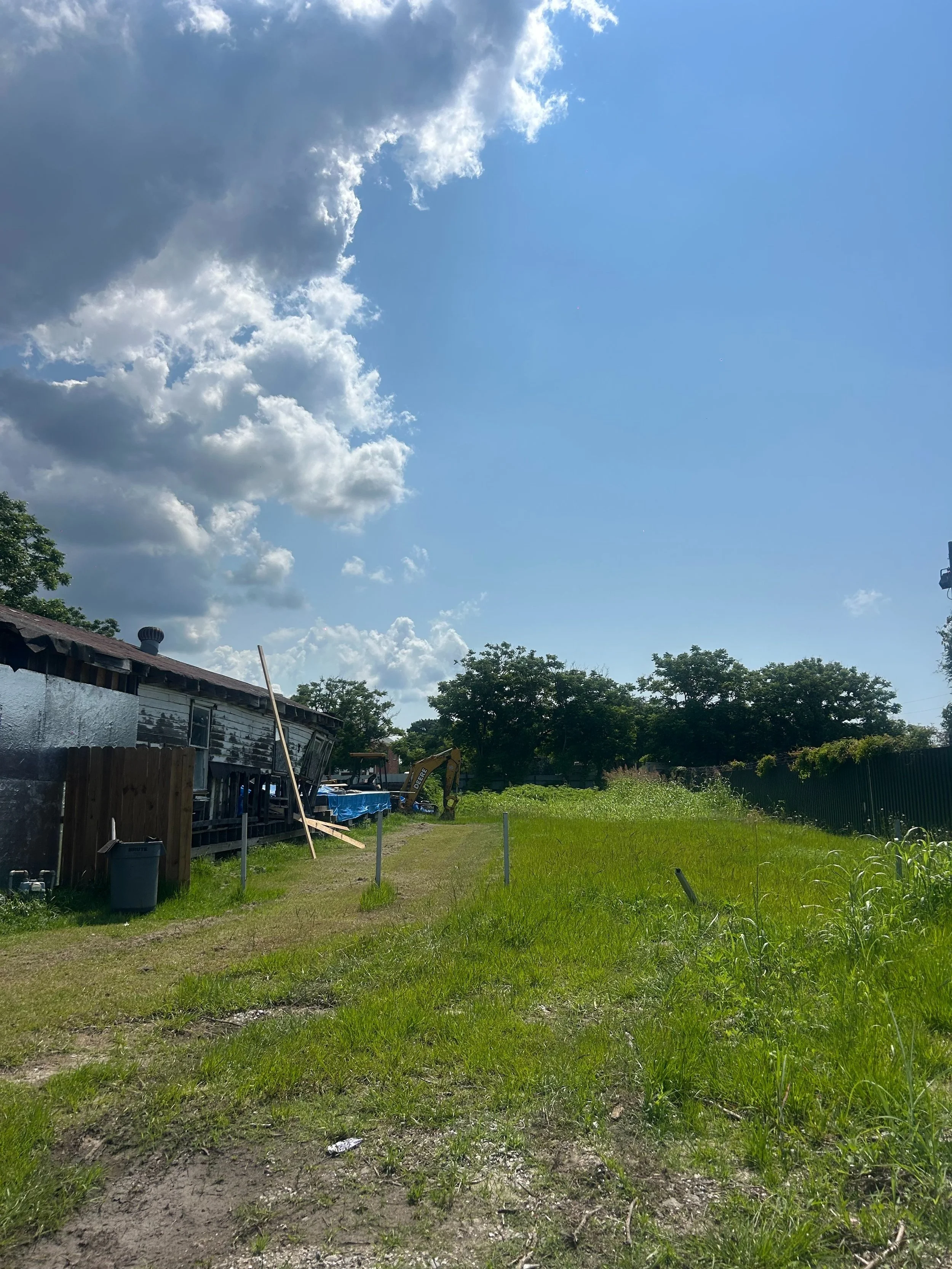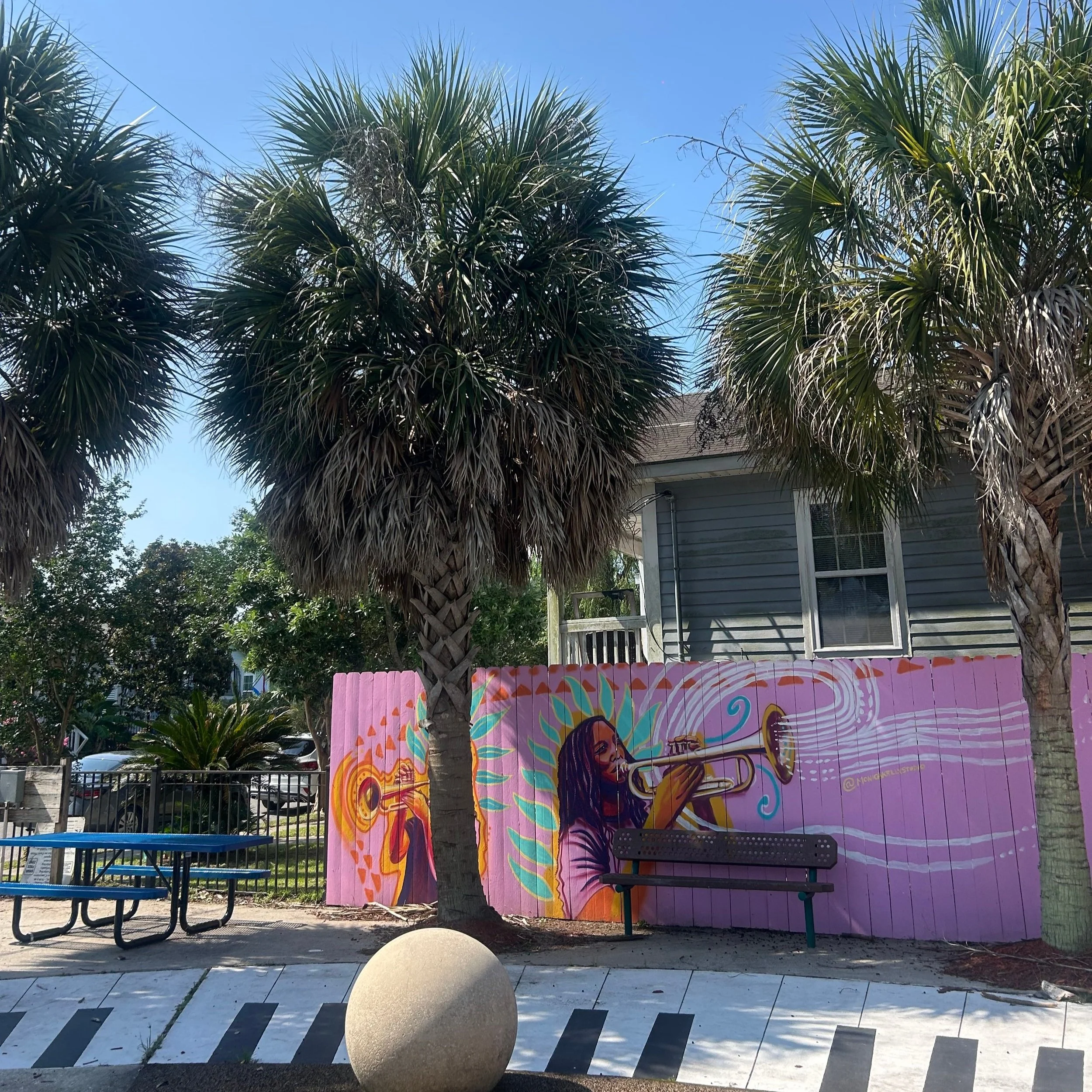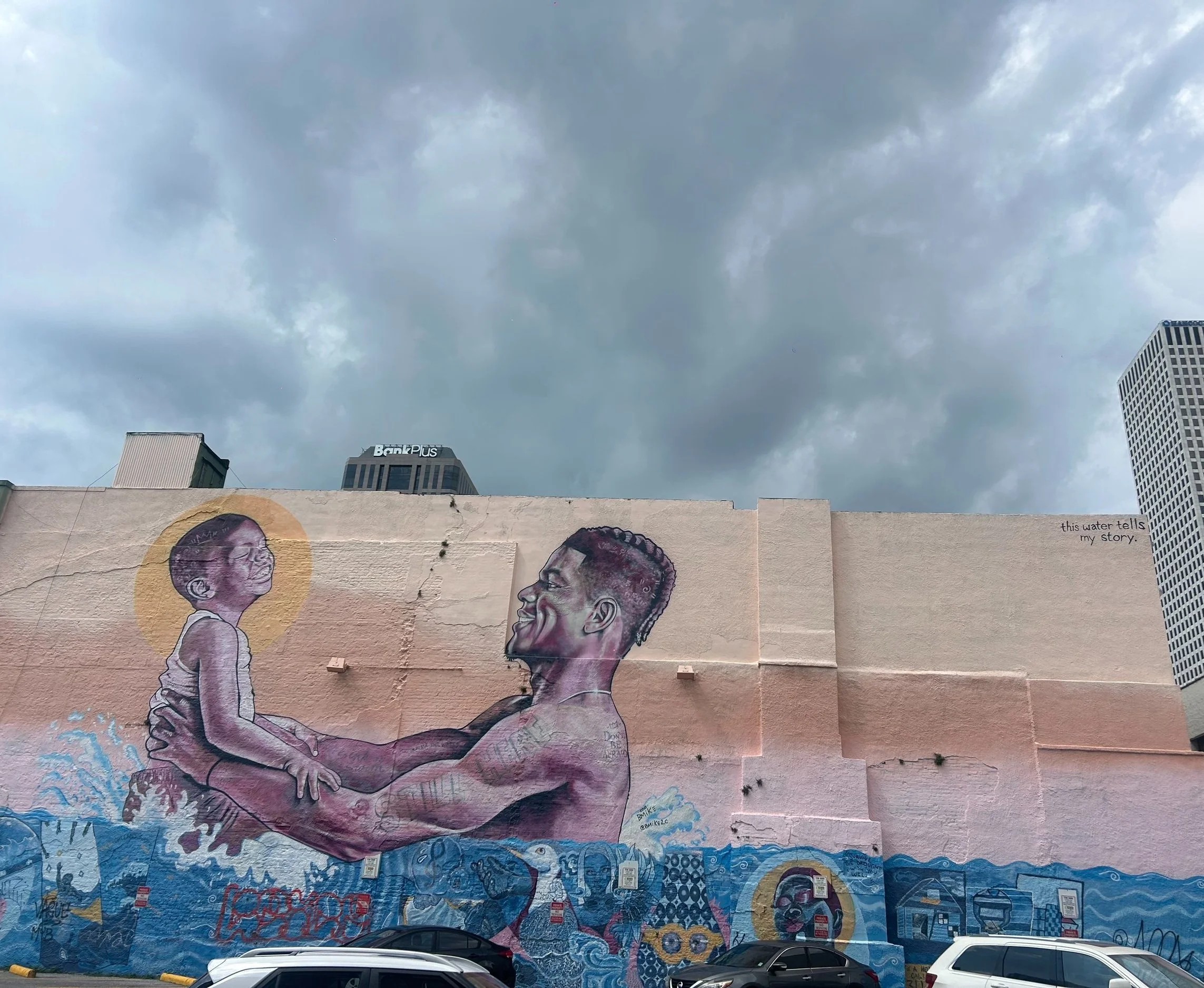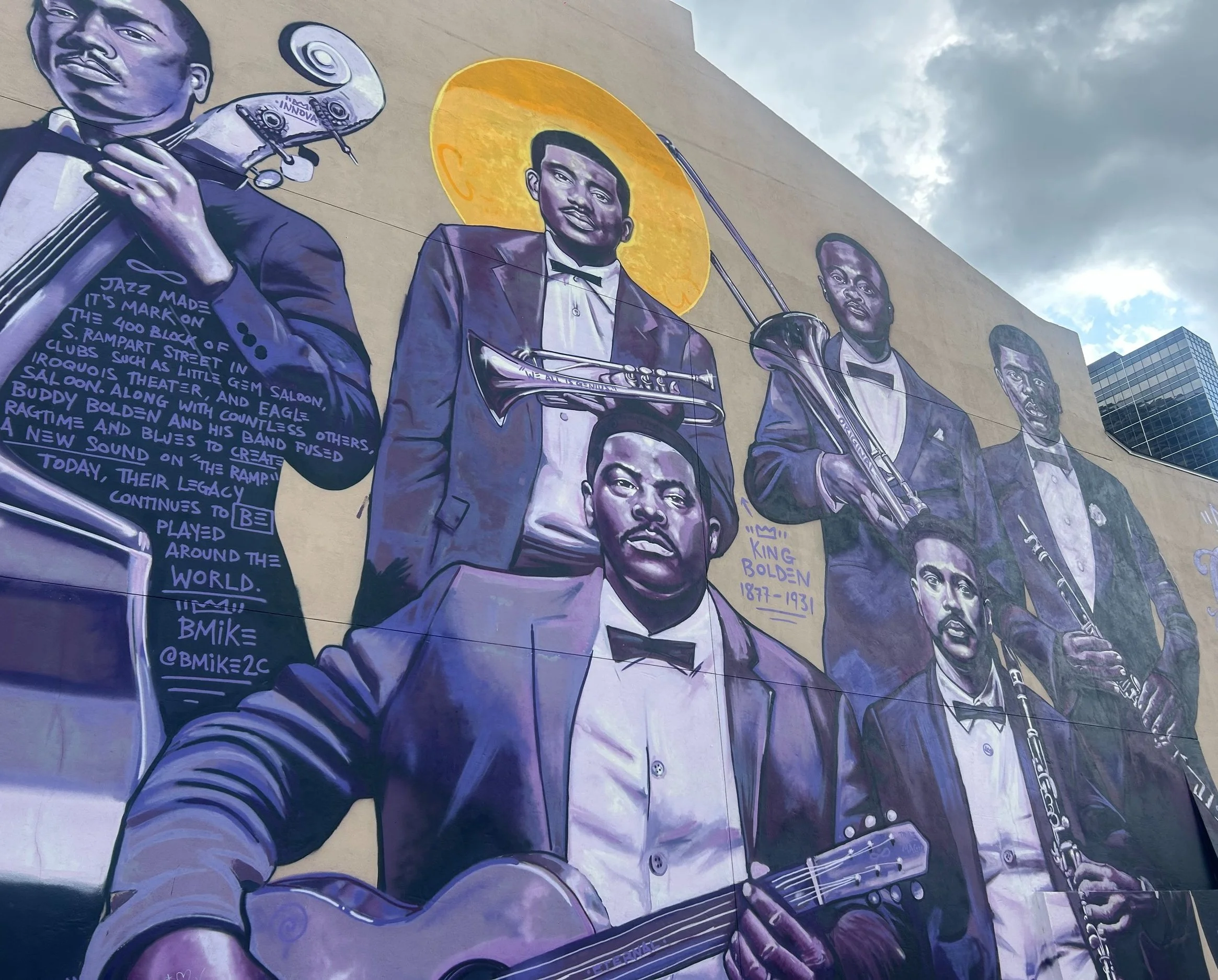We visited Sarah Broom’s “The Yellow House” that we spent the past week reading. It was a comical thing as we had not come to look for the actual yellow house that still stood on the block, but rather the empty lot of grass right next door which was formerly the Yellow House. As we walked further through this part of New Orleans East however, it was not so comical anymore. Humor gave way to heaviness as we felt the gravity of Hurricane Katrina’s destruction so many years later. Talking to local employees and homeowners, it seemed as though everyone in the area had a vivid story of where they were during Katrina and how it changed their lives in both the momentary and the long term sense. Every other lot on the street was empty, representing a home, a family, even a life that was once but is no longer. The houses that do stand however are a show of resilience like no other, having been rebuilt yet still ever-presently at the mercy of Gulf hurricanes’ impending wrath.
“I had no home. Mine had fallen all the way down. I understood then, that the place I never wanted to claim had, in fact, been containing me. We own what belongs to us whether we claim it or not”
In bookpacking “The Yellow House,” I began to notice a deeper layer in the narrative: the thread of social injustice that runs through the story of Hurricane Katrina. New Orleans East originally developed as a predominantly white suburban area, shifting over time into a predominantly African American community. After the devastation of Katrina, this area– like many predominantly Black neighborhoods – was disproportionately impacted and under-prioritized in relief and rebuilding efforts. It was truly shocking to see that even 20 years later, go-fund-me signs and posters calling for Brad Pitt to “Make It Right” (criticizing the lack of follow through with his relief campaign), still stand in the empty lawns of former homes that are yet to be rebuilt. More than just illustrating the tragic impact of natural disasters, this experience highlighted a form of environmental racism, where race and class influence who is the most exposed to environmental harm and who is left behind in recovery. In this context, water is more than a natural force of destruction- it becomes a symbol of injustice, something to be resisted rather than simply endured.
“I knew that nothing would ever be the same, displaced and fragmented as everything was… they were still reacting to Water. As was I.”
And yet, on the flip side of that coin, water can also be the very fuel inspiring resilience in the recovery from its harm. This complex sentiment in which water holds power over the city and its people while also telling their stories history resounds all around New Orleans. Just a block away from the hotel, I noticed a huge mural by BMIKE depicting an African American man and his child, with the words “Still Here” and “this water tells my story” incorporated into the picture. Much like Sarah’s narrative with the Yellow House, this mural conveys that water and hurricane storms can be seen as a storyteller beyond the threat they impose. The power of water cannot be fought but it can be acknowledged, woven into history in the ways it shapes cultural memory and identity, and somehow embraced. To embrace something that can cause so much harm is to embrace resilience. Thus, I found this imagery across our text and the city itself to be an incredibly powerful reclamation of such an unpredictable natural environment that New Orleanians call home, completely embodying resilience by doing so.
In the context of both Sarah’s relationship to the Yellow House as well as BMIKEs depiction of water telling a story, water forcing resilience may serve as a metaphor for Black resilience in New Orleans– a history marked by racial oppression but also by survival, creativity, growth. Much like how water comes and goes, flows, and is multi-generational yet changes with time, Black stories have developed and changed with time alongside the Gulf’s flowing water. Black people’s resilience helps wash away outdated societal norms, replacing them with new and ever growing cultural traditions, much like how a hurricane forces the society it imposes on to rebuild. Water is complex and while its destruction causes immense harm and tragedy, there is some resilience to be had in starting anew. Destruction reveals the often unrealized importance in what was lost, but it also forces one to move on. This is exactly what Sarah Broom ultimately concludes when the yellow house that she was always ashamed of is destroyed in Katrina.
“Shame is slow creeping. The most powerful things are quietest, if you think about it. Like water.”
We finished off the day in a secluded corner of the Central Business district where we observed a second mural by BMIKE, this one depicting famous Jazz cornetist Buddy Bolden. Being completely repainted after having been destroyed up to the top of Bolden’s head by Katrina’s water, this mural stood testament to the resilience of the community's ability to bounce back. Not only did this community take the time to repaint the mural, but the mural itself depicts a beautiful history of Jazz music which itself is filled with resilience and creativity. The artistic representation of Bolden’s “insanity” we read about in “Coming Through Slaughter” in intricate details like the bright Sun around his head really helped me to visualize what I struggled to understand whilst reading. Seeing history painted on the walls in such fashion took bookpacking to a new level, going beyond a sense of person and place to highlight its impact and importance with such a commemorative public piece of art.





